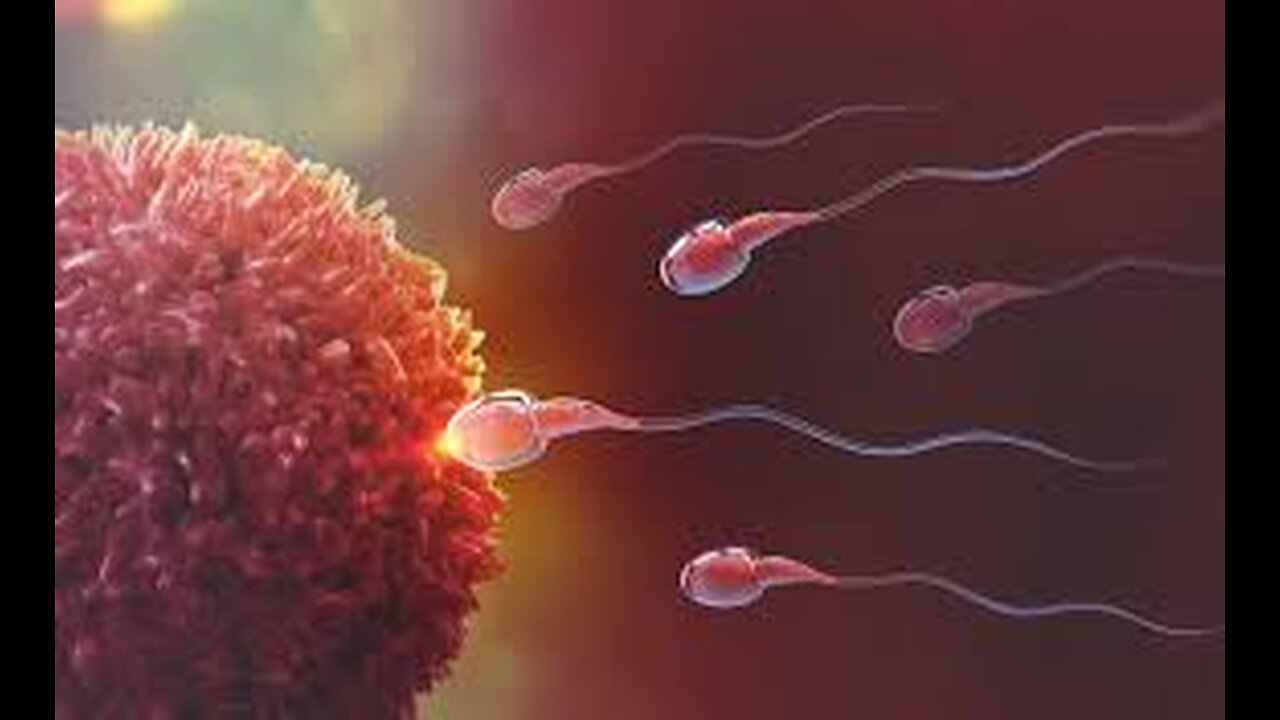Premium Only Content

How does fertilization happens???
Description
Fertilization step by step
This is the Fertilization Process
Fertilization is the amazing story of a sperm facing incredible situations to unite with an egg and form a new life.
During sexual intercourse, about 300 million sperm enter the vagina.
Shortly after, millions of them must flow out or die in their acidic environment, however, many survive because of the protective elements of the fluid that surrounds them.
Next, the sperm must pass through the cervix, which is the lower part of the uterus that opens into the vagina.
Usually this remains closed, but while the woman ovulates it remains open for a few days.
The sperm has the difficult task of swimming through the cervical mucus, which has a very watery consistency in order for the sperm to reach the uterus quickly.
Once inside the cervix, the sperm continue to swim towards the uterus, but millions of them will die trying to penetrate the mucous.
Some sperm get stuck in the pathways of the cervix, but may then continue their journey.
Once inside the uterus, there are muscular contractions that help the sperm make their way to the egg, however, the cells of the woman's immune system, mistaking the sperm for invaders, destroy thousands.
Afterwards, half of the sperm enter the empty fallopian tube while the other half swims to the fallopian tube containing the yet unfertilized egg.
Now only a few thousand remain inside the fallopian tube.
Meanwhile, small cilia push the egg towards the uterus so it continues on its path, sperm must seek that movement to reach the egg.
However, it should be noted that some sperm become trapped in the cilia and die during this part of the journey.
On the other hand, some chemicals in the reproductive tract cause the membranes in the sperm heads to change. As a result, the sperm become hyperactive, causing them to swim harder and faster towards their destination.
Finally, the sperm reaches the egg.
At this point, only a few dozen of the 300 million sperm remain on the journey.
The sperm must be pushed through this layer to reach the outer layer of the egg, that is, the Zona Pellucida, which aims to prevent more than one sperm from entering so that fertilization is normal.
Within the Zona Pellucida there is a small fluid-filled space, just outside the ovular membrane, and the first sperm to make contact will fertilize the egg.
That's right, after a dangerous adventure and against all odds, a single sperm attaches itself to the ovular membrane
Within minutes their outer membranes fuse and the egg attracts the sperm inside. This event causes changes in the membrane that prevent other sperm from attaching to it and then release chemicals that repel other sperm from the egg, making it impenetrable.
Meanwhile, inside the ovum, the male genetic material spreads out and a new membrane forms around the genetic material creating a male pronucleus.
Inside, the genetic material reforms into 23 chromosomes,
For its part, the female genetic material awakens and finishes dividing by the fusion of the sperm with the egg, resulting in the female pronucleus, which also has 23 chromosomes.
As the male and female pronuclei form, tissues called microtubules pull these thus, uniting the two groups of chromosomes and completing the fertilization process. In this instant, a unique genetic code is created, determining its sex, hair color, eye color, and hundreds of other characteristics.
The new single celled zygote is the beginning of a new human being and now the fallopian tubes and cilia gently sweep the zygote into the uterus where he or she will implant into the rich uterine walls growing and maturing for the next nine months until the birth of a new life.
If you liked this video, give it a like, share it with all your friends and loved ones so that they know about this valuable information and leave us your opinion in the comments.
-
 2:25:05
2:25:05
The Pascal Show
1 day ago $2.21 earned'THERE'S NOTHING TO HIDE?!' Trump SUDDENLY Urges House Republicans To Vote Release Epstein Files
5.6K1 -
 1:45:20
1:45:20
The Michelle Moore Show
19 hours ago'A Jaw-dropping Prophetic Word From the UFC Brawl On Saturday Night' Guest, Lt. Mark Taylor: The Michelle Moore Show (Nov 17, 2025)
20K41 -
 LIVE
LIVE
Lofi Girl
3 years agolofi hip hop radio 📚 - beats to relax/study to
324 watching -
 2:08:23
2:08:23
FreshandFit
13 hours agoDeVory Darkins Realizes Women Aren't Even TRYING To Get Married
198K73 -
 5:40:05
5:40:05
Drew Hernandez
1 day agoTRUMP DOES DAMAGE CONTROL AFTER MTG FALLOUT & DEFENDS TUCKER CARLSON!
28K16 -
 27:05
27:05
Robbi On The Record
8 days ago $20.94 earnedThe Secret to Aging Strong: What Your Body’s Been Trying to Tell You
73.4K6 -
 1:53:43
1:53:43
Badlands Media
14 hours agoBaseless Conspiracies Ep. 159: Hunting Season for the Elite
87.6K22 -
 2:05:40
2:05:40
Inverted World Live
9 hours agoThe Technocratic Web of Control w/ 7SEES | Ep. 142
74.2K14 -
 2:43:56
2:43:56
TimcastIRL
8 hours agoDemocrats COLLUDED With Epstein To HURT Trump, Emails BACKFIRE
244K80 -
 11:32:19
11:32:19
Dr Disrespect
17 hours ago🔴LIVE - DR DISRESPECT - ARC RAIDERS - STELLA MONTIS QUESTS
254K18